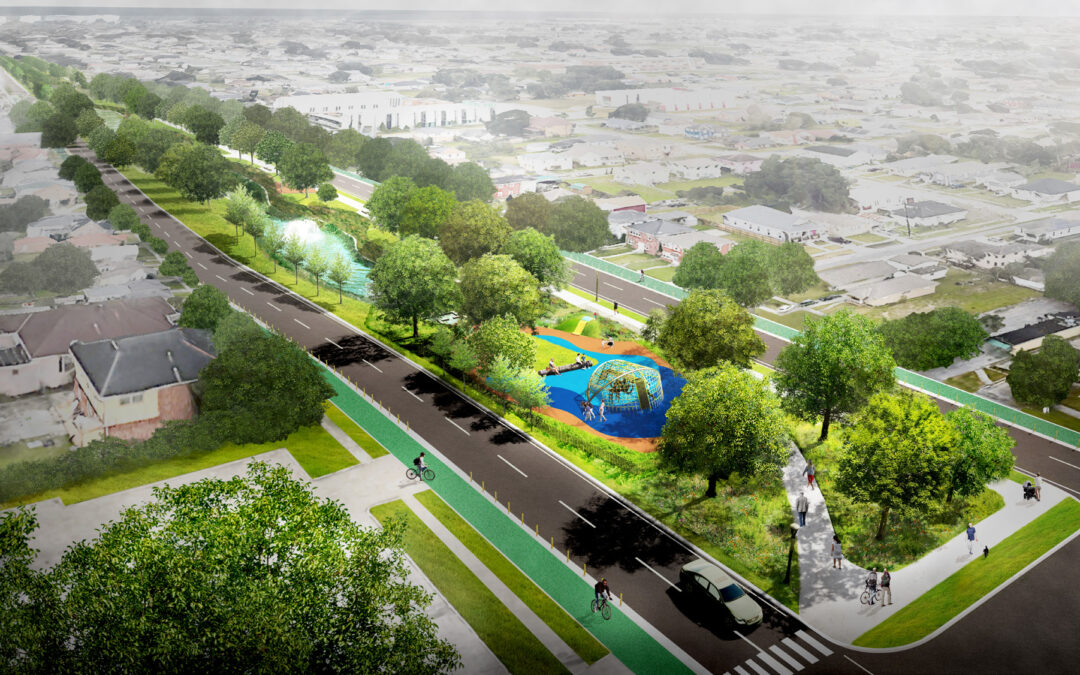Green corridors have become a trending climate resilience strategy worldwide, with cities like New York, Mexico City, Madrid, and Seoul all implementing them as part of sustainability efforts. These urban green spaces offer numerous environmental, financial, and social benefits that improve quality of life for city residents. Let’s take a deep dive into this growing movement, including the characteristics of a green corridor, how they can help mitigate the impact of climate change, and some potential challenges to constructing these spaces.
What Are Green Corridors?
Green corridors, also known as biodiversity corridors, are designated areas of interconnected natural habitats between areas of human interference like cities and highways. They are a type of nature-based solution, or NBS, designed and maintained to facilitate the movement of wildlife, support biodiversity, and make ecosystems more resilient. Urban green corridors can comprise a variety of natural elements, such as trees, shrubs, native vegetation, and water features. These features are strategically interconnected to form a continuous network throughout the city.
Green corridors provide numerous ecological benefits for both humans and wildlife. They help regulate local climate patterns, mitigate the effects of natural disasters like floods and wildfires, and improve water quality by filtering pollutants. Additionally, green corridors offer quality-of-life improvements like space for recreational activities, cultural significance, and aesthetic value.
Green Corridors Perform Carbon Sequestration
Green corridors aid in a process called carbon sequestration, which is a vital strategy for mitigating climate change. Through photosynthesis, vegetation within green corridors absorbs carbon dioxide from the atmosphere and stores it in biomass and soil. Green corridors function as carbon sinks, capturing and storing carbon over the long term. This storage process reduces the concentration of greenhouse gases in the atmosphere, mitigating the effects of global warming. Additionally, green corridors help with carbon sequestration by promoting the growth of vegetation and helping restore degraded ecosystems.
Conserving and expanding natural habitats maximizes their capacity to sequester carbon and mitigate climate change. Initiatives like reforestation, afforestation, and restoration of degraded landscapes contribute to improving carbon sequestration in green corridors.
Green Corridors Serve as Flood Mitigation
Natural disasters like floods are among the most devastating effects of climate change. Green corridors help mitigate the risk of flooding and improve water management in both urban and rural areas. They act as natural buffers against floods by absorbing excess rainfall, slowing down surface runoff, and reducing the severity of flooding events. Additionally, the vegetation within green corridors helps stabilize soil, which prevents erosion and sedimentation in waterways.
Green corridors also aid in water retention and filtration. Wetlands within green corridors act as natural sponges by absorbing and storing excess water during periods of heavy rainfall. This reduces the volume and velocity of floodwaters. In addition, the dense vegetation and permeable soils found in green corridors help filter pollutants from stormwater runoff. This improves water quality and reduces the risk of contamination in downstream ecosystems.
Green Corridors Perform Temperature Regulation
Cities are more vulnerable to rising temperatures thanks to a phenomenon known as the urban heat island effect. High concentrations of buildings, pavement, and other man-made surfaces absorb and retain heat. This results in higher energy costs, air pollution, and heat-related illnesses and deaths.
Green corridors regulate local climates and mitigate temperatures within urban areas by reducing the urban heat island effect. Vegetation and green spaces provide shade, evaporative cooling, and heat absorption. As a result, green corridors help lower ambient temperatures, which creates more comfortable environments for residents. It also reduces energy consumption by air conditioning systems.
Green corridors also help improve microclimate conditions by moderating temperature extremes and reducing thermal stress on both humans and wildlife. Urban areas with well-connected green corridors experience lower temperatures during heatwaves, which reduces the risk of heat-related illnesses and death.
The cooling effect of vegetation in green corridors helps mitigate the adverse effects of climate change on urban ecosystems, such as heat stress on plants and wildlife.
Integrating Green Corridors into Climate Resilience Planning
Green corridors must be incorporated into climate resilience planning to fully realize their potential to mitigate of the impacts of climate change. Policymakers should strive to implement green corridors into urban and regional planning processes. This integration requires a multifaceted approach, including strategic land use planning, policy development, and community engagement.
Introducing green corridors will necessitate collaboration and coordination between various parties, including government agencies, NGOs, academic institutions, and local communities. Decision-makers should align green corridor initiatives with local priorities, resources, and expertise. This will result in green infrastructure projects that deliver maximum benefits for both people and the environment.
When integrating green corridors into climate resilience planning, it is also important to consider the interconnectedness of social, ecological, and economic systems. By addressing climate resilience through this approach, planners can identify different adaptation and mitigation measures, optimize the use of resources, and make their strategies more effective.

